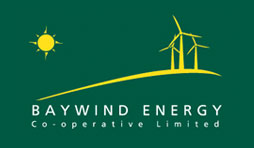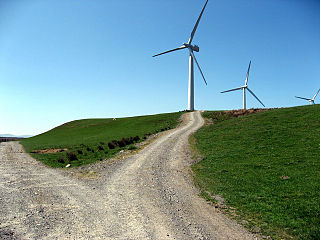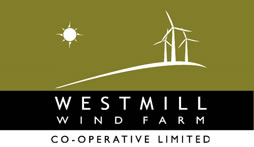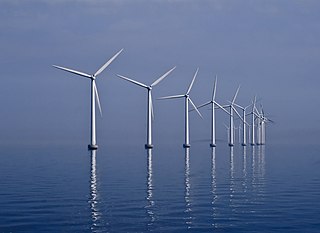Related Research Articles

Baywind Energy Co-operative was the first co-operative to own wind turbines in the United Kingdom.

AGL Energy Ltd is an Australian listed public company involved in both the generation and retailing of electricity and gas for residential and commercial use. AGL is Australia's largest electricity generator, and the nation's largest carbon emitter. In 2022, 83% of its energy came from burning coal. It produces more emissions as a single company than the nations of New Zealand, Portugal or Sweden, according to its largest shareholder, Mike Cannon-Brookes, who named it "one of the most toxic companies on the planet".

Spain is one of the countries with the largest wind power capacity installed, with over 27 GW in 2020. In 2013, it had become the first country in the world to have wind power as its main source of energy.

The energy system of Iran relies primarily on fossil fuels. However, the country has made steps to decrease its dependency on fossil fuels by investing in wind power. In 2004 Iran generated only 25 megawatts from wind power, 32 megawatts in 2005, and 45 megawatts in 2006. By 2009, total wind power capacity reached 130 megawatts. This was a result of the production of larger wind farms in more coastal and windy areas of Iran, such as Manjeel and Binaloud. In 2021, Iran's total capacity of onshore wind power grew by 0.6%.

Making up over 62% of the state's generated electricity in 2022, wind power is the largest source of electricity generation in Iowa. In 2020, over 34 billion kWh of electrical energy was generated by wind power. As of 2022, Iowa has over 12,200 megawatts (MW) of installed capacity with over 6,000 wind turbines, ranking second and third in the nation below Texas respectively.

The renewable-energy industry is the part of the energy industry focusing on new and appropriate renewable energy technologies. Investors worldwide have paid greater attention to this emerging industry in recent years. In many cases, this has translated into rapid renewable energy commercialization and considerable industry expansion. The wind power, solar power and hydroelectric power industries provide good examples of this.

Community wind projects are locally owned by farmers, investors, businesses, schools, utilities, or other public or private entities who utilize wind energy to support and reduce energy costs to the local community. The key feature is that local community members have a significant, direct financial stake in the project beyond land lease payments and tax revenue. Projects may be used for on-site power or to generate wholesale power for sale, usually on a commercial-scale greater than 100 kW.

Moel Maelogan(shown on O.S. maps as 'Maelogen', and also sometimes spelled 'Moelogan' and 'Mælogan') is a hill on the western edge of Mynydd Hiraethog in north Wales, and overlooking the Conwy Valley. It is known mostly as the general location of a wind farm.

Westmill Wind Farm Co-operative Ltd is a community-owned Industrial and Provident Society that owns 100% of the Westmill Wind Farm which is an onshore wind farm near the village of Watchfield in the Vale of White Horse, England. It has five 1.3 MW wind turbines erected in a line along the disused runway of the former RAF Watchfield. The wind farm has a power output of up to 6.5 MW, projected to produce as much electricity in a year as used by more than 2,500 homes. The turbines were erected in 8 days and the first fully month of generation was March 2008. It has an open day usually in June each year.
Goldwind Science & Technology Co., Ltd., commonly known as Goldwind, is a Chinese multinational wind turbine manufacturer headquartered in Beijing, China. Goldwind was a state-owned enterprise before 2007, with largest shareholders including Hexie Health Insurance, China Three Gorges Renewables Group, and the National Social Security Fund, state-controlled corporations holding almost 40% shares. Its founder, Wu Gang, is a Communist Party member and had a seat in the 12th National People's Congress.
The Capricorn Ridge Wind Farm is located in Sterling and Coke counties, Texas. The wind farm does not create any air and water pollution to the surrounding counties. It is a 662.5 MW wind farm, with 342 GE 1.5 MW wind turbines and 65 2.3 MW Siemens turbines that are capable of generating enough electricity for more than 220,000 homes. With all four phases combined, there should be over 400 turbines after the project commissioned in 2007. The wind farm is built, owned and operated by a subsidiary of NextEra Energy Resources, the U.S.' largest wind energy generator who is also known for generating electricity using natural gas, oil solar, wind and nuclear. This company, together with its subsidiaries owns, operates, develops, constructs and manages electricity and energy generating facilities in not only the U.S. but also in Canada and Spain. The project is part owned by San Antonio-based Sullivan Trillian Fund Private Equity. Its property Offtaker is Energy Market- ERCOT.

Wind power in Belgium has seen significant advancements, starting with the generation of electricity from offshore wind farms in 2009. By 2020, the capacity of these offshore farms reached 2,262 megawatts (MW), matching the combined output of Belgium's largest nuclear reactors, Doel 4 and Tihange 3. Concurrently, the development of on-shore wind energy, which remained minimal until 2004, experienced significant growth, with installed capacity and production doubling annually from 96 MW in 2004 to 2,476.1 MW by 2021. The percentage of electricity demand met by wind grew to about 14.4% by 2020.
Wind power in Indiana was limited to a few small water-pumping windmills on farms until 2008 with construction of Indiana's first utility-scale wind power facility, Goodland with a nameplate capacity of 130 MW. As of March of 2024, Indiana had a total of 2,743 MW of wind power capacity installed, ranking it 12th among U.S. states. Wind power was responsible for 4.8% of in-state electricity production in 2016.
The Macarthur Wind Farm is a wind farm located in Macarthur, Victoria, Australia, near Hamilton, 260 km west of Melbourne. It is on a 5,500 ha site which has an installed capacity of 420 megawatts (MW). Based on a capacity factor of around 35%, it is estimated that the long-term average generation will be approximately 1,250 GWh per year. Its actual capacity factor is much lower, with a historical average of 26.29% since 2013.
Ecopower is a Belgian cooperative founded in 1991, financing renewable energy projects in Flanders.

Ursula Sladek is a German environmentalist, founder and former president of Schönau Electricity Works, a "registered cooperative society" under German Law in Schönau, Germany, that provides electricity from renewable sources. She won a Goldman Environmental Prize in 2011.

Energy in the Netherlands describes energy and electricity production, consumption and import in the Netherlands. Electricity sector in the Netherlands is the main article of electricity in the Netherlands.
The Berkshire Wind Power Project is a wind farm on Brodie Mountain in Hancock, Massachusetts. Owned and operated by the Berkshire Wind Power Cooperative Corporation, it is the second largest wind farm in Massachusetts, with 12 GE 1.5 MW wind turbines and a total installed capacity of 19.6 MW. The Berkshire wind power project became fully operational in 2011, and provides enough electricity to power 7,800 homes annually.
Wind power in Arkansas remains nearly untapped, with just a single wind turbine in the state. Arkansas does not have a renewable portfolio standard. Studies have concluded that while Arkansas is generally considered to have low wind resources, there are significant pockets of it throughout the state.

A renewable energy cooperative is a decentralized, non-governmental initiative of local communities and citizens to promote the production and consumption of renewable energy. It is formed by a group of community members that share a common long-term goal for a sustainable future of energy and work to advance the transition through active citizenship involvement. In this way, the citizens are prosumers: they act as both producers and consumers in an attempt to democratize energy supplies by shifting away from relying on large companies.